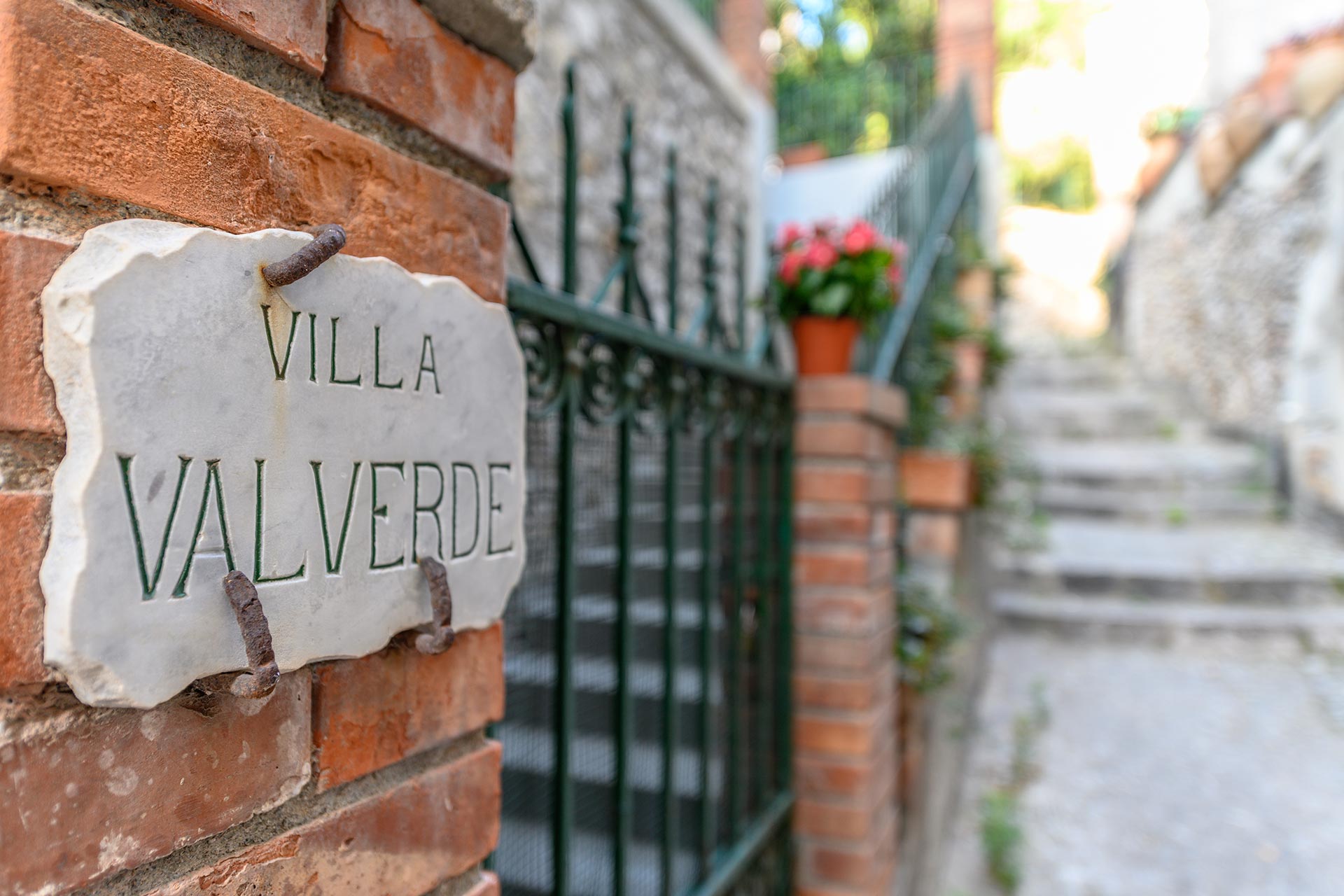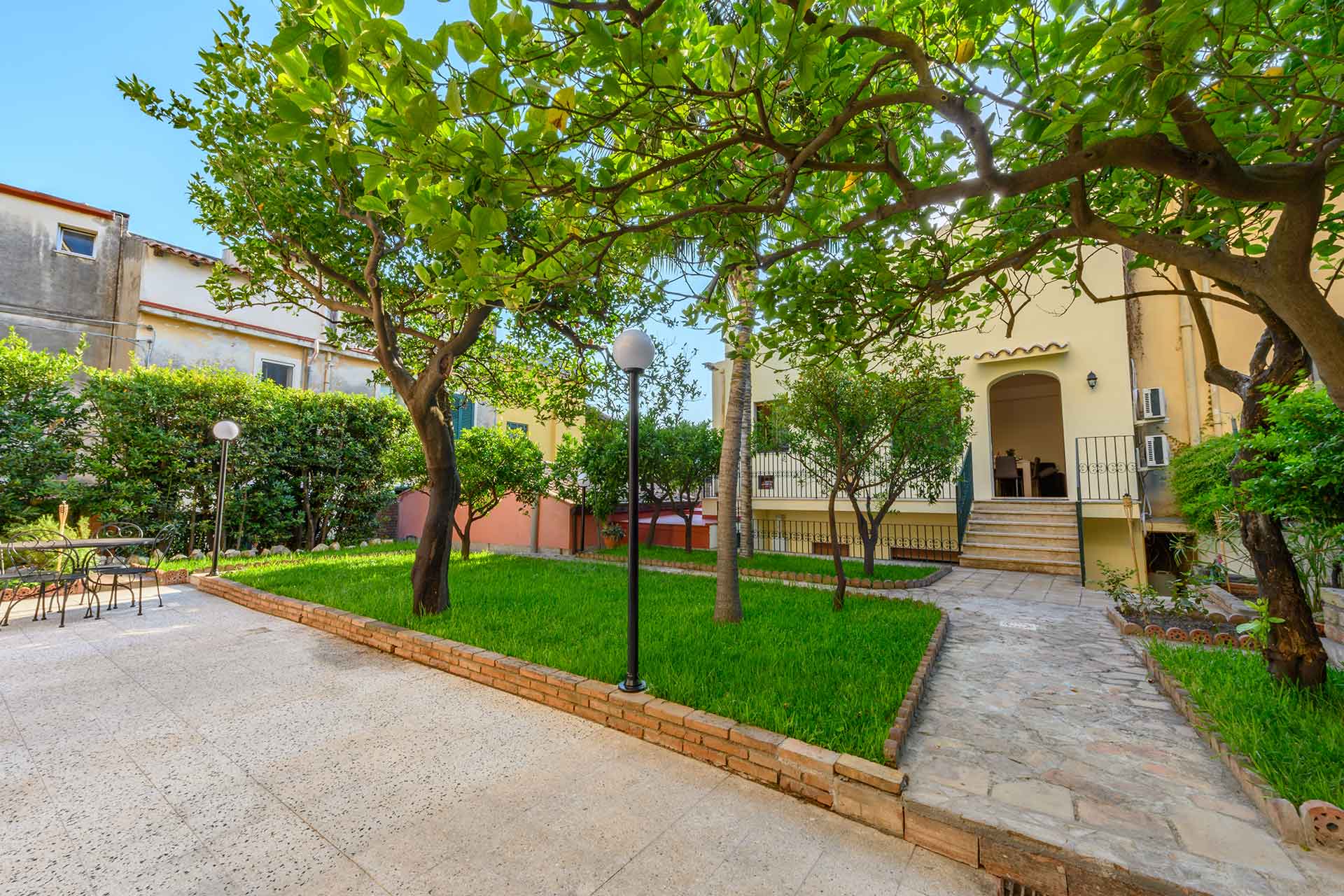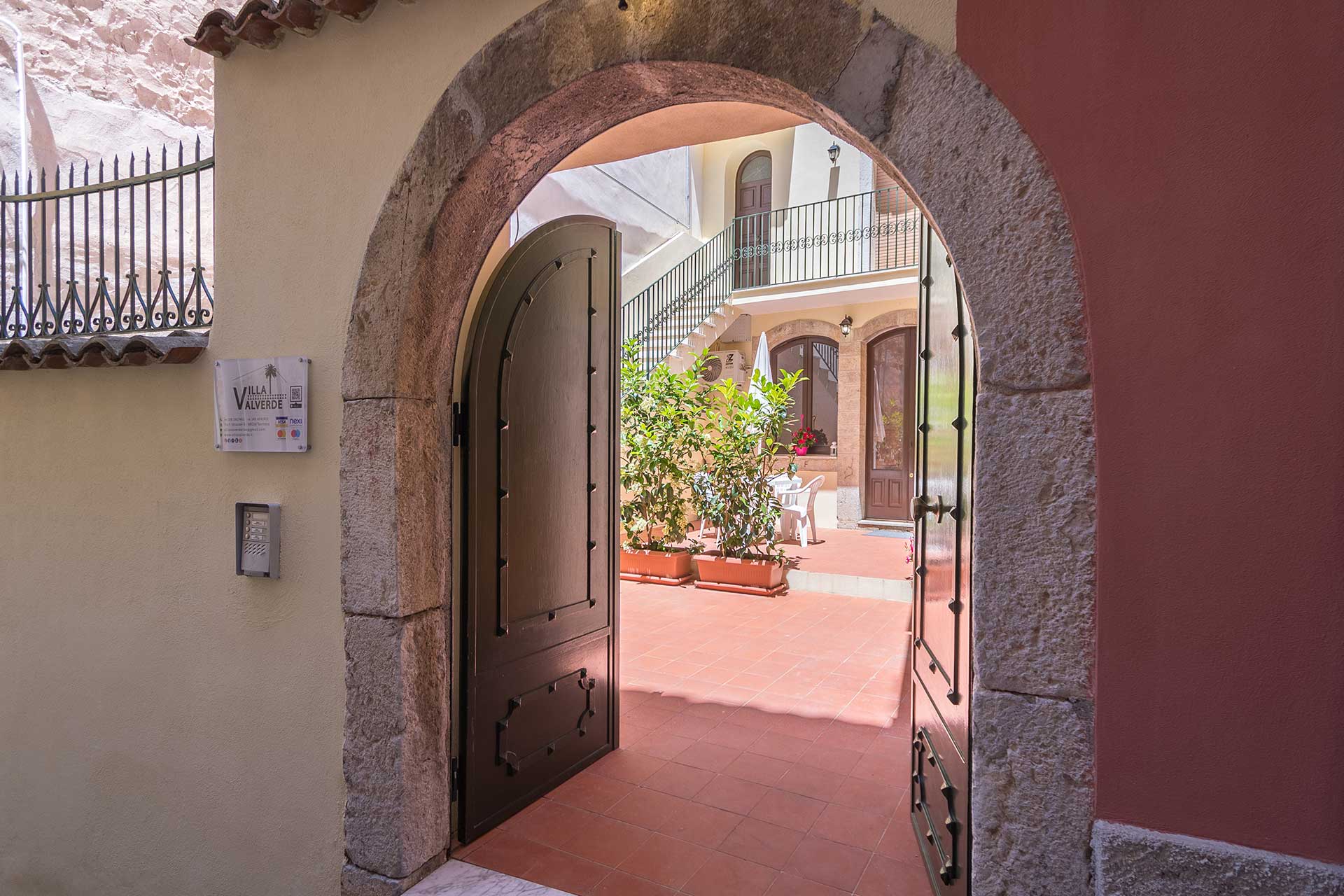
a few steps from Corso Umberto I

of peace and serenity

elegant spaces, a terrace and a private garden
"Everything becomes indescribable, its beauty is so great and
rare!"
Florence Trevelyan Trevelyan
A century-long history
Being among the first built on site around 1920, the tourist facility opened its doors under the name Pensione Villa Valverde.
The Guest house, built by the Cipolla family, still owners of the property, was the only one in the area, entirely constructed with the precious red marble and white stone of Taormina in the typical Liberty style of those years.
It owes its name to the ancient monastery of Santa Maria Valverde of the Convent of the Penitential Sisters of the Congregation of Valverde, built in 1275 and located in Piazza Vittorio Emanuele II (also known as “Piazza Badia”).
When the law on the suppression of religious orders and the expropriation of their property was enacted in 1866, the building has passed at the disposal of Carabinieri and still remains its headquarter. The church adjacent to the monastery was first used as a theater, known as the Teatro Regina Margherita (in honor of the wife of King Umberto I), and then in 1960 the place of the theater was taken by the Palazzo dei Congressi (Palace of Congresses), where numerous international conferences and events are held.
The villa, which has been used as a family residence since the 70s, a century after its foundation and after a careful renovation is now returning to its ancient vocation. Thanks to the redesign of the interior spaces with special attention to original details, the structure has retained its features, combining them with modern amenities.
Ciccio Cipolla, the historian of Taormina
Francesco, aka Ciccio, Cipolla was born in Taormina on April 19, 1931. During the Second World War, Ciccio witnessed how German troops, stationed in Taormina, completely occupied the pension Villa Valverde, which was then run by his father. After the war, while studying at school, he developedd and deepened his passion for classical sciences. The following and accurate self-taught studies lead him to participate in the first Italian TV quiz show “Lascia o raddoppia?” (“Leave it or double it?”) in 1957, thereby making his name and the name of Taormina known throughout the country.
A political activist and a great historian, and a lover of his city, he dedicates his whole life to the revaluation and the improvement of the territory, establishing first a radio programme, “C’era una volta Taormina” (There was once Taormina), and then writing two of the most important texts about the history of Taormina: the historical and archaeological work “C’era una volta Taormina ed il suo territorio” (There was once Taormina and its territory), which traces the history of Taormina from prehistoric times to the unification of Italy and “Toponomastica Tauromenitana” (Toponymy of Taormina), which describes the etymological origins of the names of streets and places in Taormina.
For his cultural commitment and popularization of history, he was awarded various prizes, including the “Assemblaggio Città di Spoleto” prize, the “Luigi Pirandello” prize and the “Città di Taormina” prize, becoming one of the greatest experts in local history.
Between the 80s and 90s he founded and led the local branch of the Archaeoclub, which became one of the most active on the east coast.
Today he continues to be remembered as one of the most important personalities of the historical and cultural scene of Taormina. In March, 2021 a panoramic terrace near Porta Catania was dedicated to his memory and named Belvedere Francesco Cipolla.

